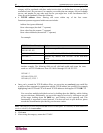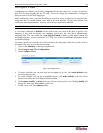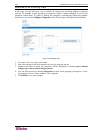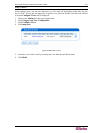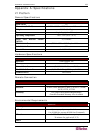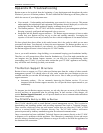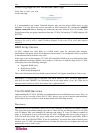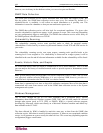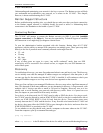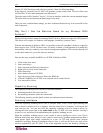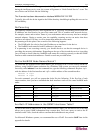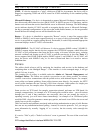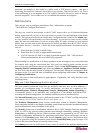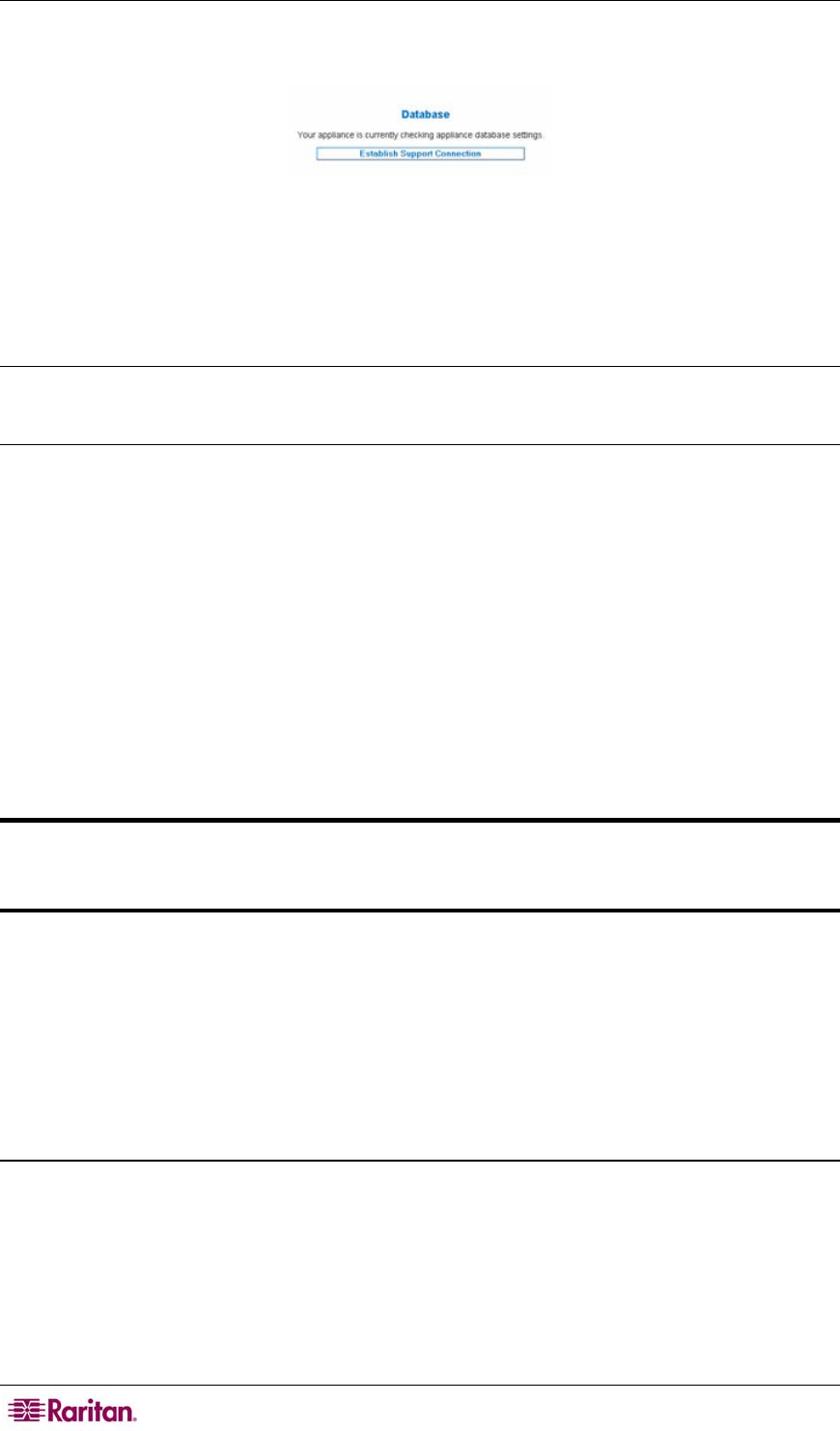
106 COMMANDCENTER NOC ADMINISTRATOR GUIDE
Checking Appliance Database Settings
From time to time, you may
see this message:
It is recommended you contact Technical Support, who can then request SSH access to your
appliance. You can allow this access and open an SSH connection by clicking the establish
support connection button. Opening the connection may take between 10 to 30 seconds. Your
firewall must allow out-going connections from the CC-NOC on both port 22 (SSH) and port 443
(HTTPS).
Note: Establishing the connection does not necessarily alert the support staff so it is still
necessary for you to call or email Technical Support in the event of an issue that requires
attention.
RAID Array Failure
CC-NOC contains two hard disks in a RAID mirror array for increased data integrity.
Notifications will appear (in the Event Browser and by email, if so configured) if there is an error
in the mirrored data or with the array itself.
If the error is one of data integrity, CC-NOC will rebuild the RAID array to synchronize the data,
with additional notification updates on its progress. If the error is with the array itself, CC-NOC
will display one of the following messages:
• Degraded RAID Array
• RAID Array Failure
• RAID Array Dissapeared
These are critical errors and you should contact Raritan Tech Support immediately if they occur.
Important: If instructed to replace the hard disks in your CC-NOC appliance,
the disk drives CANNOT be removed while the appliance is on. All Disk drive
swaps must be done while the machine is powered off.
The CC-NOC Services
Understanding the CC-NOC will help you understand how to troubleshoot most issues. Here, we
will give you an overview of how the CC-NOC and its core services function and interrelate.
Each of these services will be covered in more detail in the following sections.
Discovery
The discovery service performs a daily scan of your managed IP addresses and address ranges.
This is the first step towards polling a new device. Once per day, the discovery service will ping
each IP address from your managed IP addresses and ranges. If a new IP address responds to
pings, it will generate a new event inside the CC-NOC, notifying other services that a suspect
node has been discovered. The “ping” utility relies on the ICMP protocol, specifically ICMP’s
ECHO (Code 8) and ECHO REPLY (Code 0) capabilities. You must allow both of these to pass
between your CC-NOC and managed devices in order for discovery to recognize the node and
generate the suspect node event.



